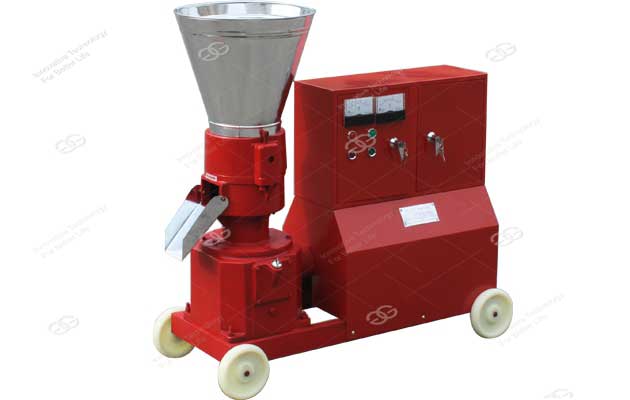The Benefits Of Pellet Feed
1. To avoid animal picky eaters. Formula with a variety of feed ingredients, nutrition and comprehensive, to prevent the animal from the powder in the selection of its favorite, refused to intake of other components of the phenomenon. Feeding losses can be reduced by 8% to 10% due to the uniformity of the pelleted feed during storage and feeding.
2. High feed return. In the granulation process, due to the combined effects of moisture, temperature and pressure, the feed produces a number of physical and chemical reactions, so that starch gelatinization, enzyme activity increased, can feed animals more effectively digest the feed, into weight gain . Feeding poultry and pigs with pelleted feed improves feed conversion (ie, return) by 10% to 12% compared to powder. Feeding pigs with pellets, the average daily gain of 4%, feed ratio decreased by 6%; fed broiler, feed ratio can be reduced by 3% -10%.
3. Storage Transportation is more economical. The granulation, the general will increase the bulk density of feed 40% -100%, can reduce the storage capacity, save freight.
4. Mobility, easy to manage. Many powder, especially the proportion of small cashmere feed, add molasses or high fat and urea feed is often adhered to the library. Because of the fluidity of the pelleted feed, very little sticking occurs, and pelleted feeds are the most popular for farms where dairy cattle or poultry are grown on large scale with automatic feeders.
5. To avoid automatic classification of feed ingredients to reduce environmental pollution. In the process of powder storage and transportation due to the volume of various powder quality varies, prone to classification. After the particles are made, there is no classification of feed ingredients, and dust particles are not easy to fly, in the process of feeding the particulate material on air and water pollution less than the powder.
The feed pellet machine belongs to feed pelleting equipment. Based on corn, soybean meal, straw, grass, rice husk and other crushed objects directly to the particles of feed processing machinery.

2. High feed return. In the granulation process, due to the combined effects of moisture, temperature and pressure, the feed produces a number of physical and chemical reactions, so that starch gelatinization, enzyme activity increased, can feed animals more effectively digest the feed, into weight gain . Feeding poultry and pigs with pelleted feed improves feed conversion (ie, return) by 10% to 12% compared to powder. Feeding pigs with pellets, the average daily gain of 4%, feed ratio decreased by 6%; fed broiler, feed ratio can be reduced by 3% -10%.
3. Storage Transportation is more economical. The granulation, the general will increase the bulk density of feed 40% -100%, can reduce the storage capacity, save freight.
4. Mobility, easy to manage. Many powder, especially the proportion of small cashmere feed, add molasses or high fat and urea feed is often adhered to the library. Because of the fluidity of the pelleted feed, very little sticking occurs, and pelleted feeds are the most popular for farms where dairy cattle or poultry are grown on large scale with automatic feeders.
5. To avoid automatic classification of feed ingredients to reduce environmental pollution. In the process of powder storage and transportation due to the volume of various powder quality varies, prone to classification. After the particles are made, there is no classification of feed ingredients, and dust particles are not easy to fly, in the process of feeding the particulate material on air and water pollution less than the powder.
The feed pellet machine belongs to feed pelleting equipment. Based on corn, soybean meal, straw, grass, rice husk and other crushed objects directly to the particles of feed processing machinery.

0086-371-63398802
0086-185-3993-1566
No.100 Shangdu Road, Zhengdong New District, Zhengzhou City, Henan Province, China
CONTACT US
Copyright © 2010 - Henan GELGOOG Machinery Co.,LTD
Links:Packing Machine | Wafer Biscuit Machine |











